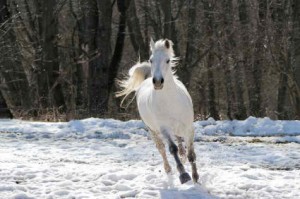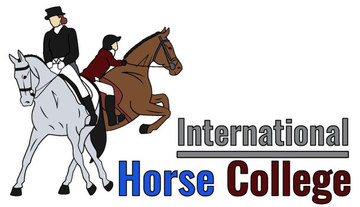 Q. How can I make my horse business profitable?
Q. How can I make my horse business profitable?
Everyone wants to be well paid for doing what they love, especially if horses come into the equation. However many horse businesses do not run at a profit and often need to be supported by another income to justify their existence.
Profit is not the cash generated, but the income after the expenses have been calculated. For a horse business to become profitable, these three rules must be followed and are the basis of all profitable businesses.
Then, usethe tip to change a profitable horse business to a very profitable horse business to open your mind to the possibilities. . .
- Know your expenses
List everything, including all the fixed expenses that are often forgotten. This could be the rent that needs to be paid each week. If you own your property, include the rates, water, power and mortgage.Make sure you pay yourself for your time as well.List all the variable expenses. If you have horses on full board, work out how much feed and bedding each horse will use. Also calculate the cost for some-one to mix the feed and take it to the horse. The more horses you have on full board, the more these expenses will increase.
Keep your ‘other’ expenses separate. These are the expenses that you may calculate as part of your business but they would probably be your own personal expenses if you didn’t have a horse business. They may be for your own horse/ horses, competition expenses and your accommodation expenses.
By separating the expenses into these three lists, you can be realistic. I have seen many horse businesses that are doing quite well financially, be pulled into the negative because the owner is overspending on their personal horses/s.
- Know what income is required to cover expenses
List your streams of income separately. A good horse business will have a number of income streams that could include agistment/livery/boarding, lessons, shop (for snacks, feed, saddlery) schooling of horses and even selling manure.Calculate thegross (total) income and net (income less expenses) income from each stream separately. That way you can see which of the areas of your business bring in the most cash and also which areas are the most profitable.
- Improve the margin
Look at improving the margin with each stream of income separately. This is where you can also add more streams of income.If any streams of income are not working, then you need to decide if you can make this income stream profitable, use it as a ‘feeder’ into a more profitable area of your horse business or else simply not provide that service any more.
Improving the margin is often a matter of decreasing the expenses and/or increasing the income.Ask your suppliers for a better price, or shop around for other suppliers. You may be able to cut your power or phone account by changing to another supplier. A 3% price rise may be feasible if you have not had a price increase for some time, especially if you are giving your customers great value.
Improving the margin could also be simply making variations to the service offered. For instance, you may ask the owners of the horses on full board to buy their feed themselves. Although there will be less income for this service, there is also less expense. Psychologically, if the owner is paying you less they are happier, even though they may be paying more overall.
You may decide that there are areas of the business that already provide enough margin and they don’t need to be changed. Continue to monitor them.
Once the rules above are followed, what ways can you make your horse business stand out from the rest? What is the need in your area? How can you serve this need?
Why should people pay you, and pay you well unless they are getting something out of it. Your customers must be getting value from what you are offering them. Always think about giving your customers more than they expect.
The trick is to make your business stand out so that people will choose you as the specialist over your competitors. Continue to keep in mind, what do your customers (or potential customers) need and how can you meet these needs?
You could be a qualified instructor competing against others in your area who do not hold qualifications. You could capitalize on this and market the importance of lessons from trained, qualified instructors in the message to your potential students.
There may be a number of schools in your area that do not have sporting/ recreation facilities. Offer them the opportunity to ride and learn about horses as a sport. Give them a program where they handle horses, learn the theory and also ride. If it is well structured you will need horses for only 25% of the students at any one time.
Do you have an area where you can go trail riding? There may be an opportunity to joint venture with an accommodation provider in your area to offer this as part of their weekend package.
Remember to identify the need first.
Opportunities are endless, but you must find what people want before you begin. This can be done with a survey to your current clients and also your potential clients.
Once the need has been identified, go back to the original three rules to make sure the idea is financially viable. Do you need to employ more staff or buy more horses? All these extra expenses must be considered, which is why it is so important to calculate each stream of income in your horse business into separate profit centers.
If this area of your business is not going to be profitable, either directly or indirectly then don’t waste your time and energy on it. The first rule of business is to make a profit.
By now, you should already have a number of ideas of how to improve your horse business. Thinking about them is the first step, but remember that you must take action for those ideas to work.
Good Luck










